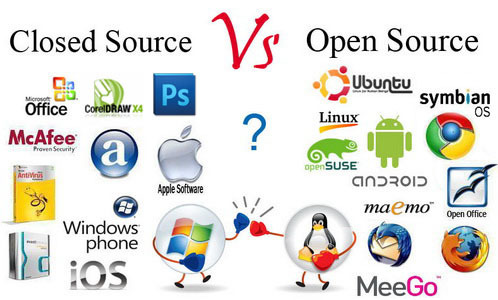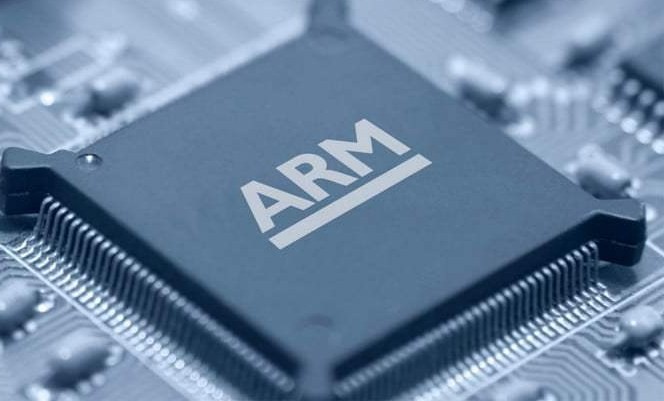In the present times, where technology has advanced another foot forward and taken a leap in the future, the interdependence of rights to arrive at innovative solutions is nothing unfamiliar. It is a common practice that allows Research and Technological Developments (RTDs) and Research and Technology Organizations (RTOs) to learn from others and implement better ideas. In such a scenario where open innovation models are becoming a common trend of how companies deal with their Intellectual Property (IP) assets, it becomes crucial to analyze the modus operandi of such models.
What is Open Innovation?
There are two models of innovation, namely:
- A Joint and Collaborative Model: In such a model, the assets of an entity are limited in number, and for developing knowledge, an exchange of information for the benefit of both parties is sought by creating a collaborative community. It is usually witnessed in many IT companies and even in consortia of universities to accomplish their common research goals.
- A Competitive Model: As the name suggests, this model focuses on extensive and robust protection of all assets held by the entity, tangible and intangible, to prevent any exchange of information to maximize monopoly and personal profits accruing to it. This model is a competitive approach to keep third parties at bay, as is observed in the industry related to video gaming.
The open innovation model is the exact opposite of a closed model, where the enterprise relies on itself and its resources to conclude an entire innovative process internally. Open innovation is not synonymous with the "Do It Yourself" (DIY) mechanism. It instead utilizes resources gathered through internal operations and external absorptions from different sources of knowledge by collaborating and joining hands with R&D participants other than itself to develop creative solutions. It is also called 'crowdsourcing' or 'co-creation' projects. The concept was the brainchild of Henry Chesbrough, who wrote the book titled 'Open Innovation: The New Imperative for Creating and Profiting from Technology,' in which he observed:
"Open innovation is a paradigm that assumes that firms can and should use external ideas as well as internal ideas, and internal and external paths to market, as the firms look to advance their technology. Open innovation combines internal and external ideas into architectures and systems whose requirements are defined by a business model. The business model utilizes both external and internal ideas to create value."
Since there is a multiplication of several Intellectual Property Rights (IPRs) belonging to different proprietors, there is no true monopoly of any individual actor, and the contributions are shared. It is a useful alternative to conventional internal projects since the sophistication of technology has led to a substantial rise in the cost of R&D activities and production. Therefore, in simple words, open innovation helps make use of the external knowledge made available for better management of the internal knowledge to extract benefits out of IP assets.
Comparing Open Innovation with Closed Innovation

| Open Innovation Model | Closed Innovation Model |
| It aims at building a better and strong business model rather than being the first to market goods. | Extensive protection of IP assets could lead to commercial advantage for making the first move in the market. |
| It helps utilize internal and external sources of knowledge to build innovative solutions through collaborative efforts. | Internal knowledge is rigorously protected and safeguarded without any external influence. |
| Since there is a multiplication of the source of knowledge, the field experts having varied knowledge must be brought together to realize the entire operation. | Since the source of knowledge is central and internally held, there is a need to protect and utilize the same strategically. |
| External R&D practitioners hold a significant value as it is a collaborative venture. | There is complete control over the R&D process, starting from the first stage of discovery to commercializing the same. |
| The returns or benefits are shared as per a pre-stipulated contract. | No third party can control or benefit from the innovations emerging out of a closed innovation project. |
| It easily shortens the time it takes to innovate since there is a substantial division of labor. | As all the operations are governed under the auspices of a single coordinator, there is a substantial investment of time. |
| Since the benefits are shared, at the culmination of the project, the losses, risks, and failures are also shared. | There is no sharing of benefits since the model of close innovation promotes the creation of a monopoly. Therefore, all profits and losses are borne by the same entity. |
| It also reduces the cost of bringing innovation to the market as there is a pooling of resources. | The cost of bringing innovation to the market is increased as the capital on trial and error is paid out of the credit of a single enterprise. |
| It also helps in getting preferential access to markets. | It may or may not help in getting preferential access to markets, depending on the entity's image controlling the operation. |
Examples of Open Innovation

- Google's TensorFlow: Google came up with its automated learning tool known as TensorFlow that is available to the public under open-source license, namely Apache 2.0, which allows third-party developers to utilize and modify the code. The precursor to such use is that any important or useful modification can be converted into a Google product.
- ARM Processors: ARM Processors strategically used their plan of leveraging their IP assets by reducing the control over their development and manufacturing process and giving that control to giants like Apple and Samsung by not selling their processors as finished products infused in silicon. They took another approach by simply licensing independent manufacturers to use the architecture only, as has been developed but allowing other additions to be customized, thereby enhancing flexibility.

Modes of Managing IP Assets in an Open Innovation Project
Although there is a considerable amount of advantage in sharing information, there is also a great possibility of leakage of such assets along with the risk of free-riding where the IP is not managed up to the mark. Therefore, it is imperative to ascertain the right of each party and the nature of exchange along with the allocation of ownership of what is a result of such collaboration. The many ways of adopting open innovation can be as follows:
- Creation of independent spin-offs, which work towards the development of a new project;
- Entering into a licensing agreement;
- Gaining membership of a specific patent pool;
- Networking and crowdsourcing; and
- Collaboration and R&D alliances, whether under the form of a research joint venture or an R&D project.
While pursuing such routes of utilizing open source innovation, the following strategic measures can be adopted to ensure that IP assets are managed well and that the information thereof is guarded and spill-proof.
- Non-Disclosure Agreement: Although open innovation focuses on the exchange of information, it seeks to maintain such disclosures only with parties to the transaction. Therefore, to avoid any misappropriation or unaccredited use of such information, it is preferable to have a Non-Disclosure Agreement (NDA) in hand. It specifies the terms of disclosure and the conditions upon which such confidence has been transposed between the agreed parties.
- Consortium Agreement: A consortium is an association of two or more parties that may consist of individuals, companies, organizations, governments, etc., which come together for the performance of a common goal. Therefore, a consortium agreement is helpful when entities of different sizes and nature come together to collaborate. The same could include Multi-National Companies, Small and Medium Enterprises (SMEs), or even Research and Technology Organizations, which streamline their R&D. The agreement clearly demarcates the nature of the relationship between all the parties and their rights and obligations. It also goes on to define the entire management scheme and course of performance of the work undertaken.
- Joint Ownership: Herein, the parties to an open innovation project agree to collaborate in the form of a joint venture. It may not essentially be for a long duration, instead only until the termination of the contract period or until the innovative solution is arrived at. A joint ownership agreement can help manage IP assets and the parties to such agreement by specifying the terms about the ownership rights, the extent of use/exploitation, and the terms of disposal of such assets. It shall also specify how a dispute shall be mitigated by taking recourse to courts or through alternative dispute resolution mechanisms.
- Licensing Agreement: A much more sought-after and frequently adopted approach is that of licensing the IP asset. It can include a reciprocal set-up of licensing in and licensing out whereby in the former, the entity can access the knowledge held by a third party, while in the latter, the entity is obliged to share its own knowledge with a third party. It is the most preferred approach since the proprietor still controls the asset and how another party makes use of it without making a transaction of a permanent transfer of rights and duties.
Conclusion
The use of open innovation can take many diverse forms by incorporating IP assets from multiple actors acting with heterogeneous interests as well. For ensuring that such endeavors gather positive outputs, it is necessary to have proactive private ordering with proper legal agreements and contracts in place. It can accelerate the growth of an entity by influencing the rate of the research and development process while also limiting the cost and time to create productive assets. There is no straight-jacketed formula for implementing it, and therefore, to succeed in such an innovative process, the parties to the transaction should have an unambiguous understanding and plan of action to enhance cooperation.



